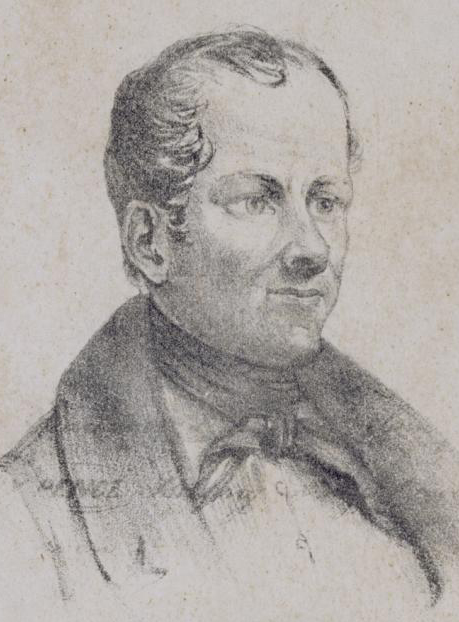Captain John Knatchbull

John Knatchbull (1792-1844), naval captain and convict, was probably the John Knatchbull baptised on 24 January 1793 at Norton, near Provender, Kent, England, the son of Sir Edward Knatchbull (1758-1819) and his second wife Frances, daughter of Thomas Graham, an American refugee. His father was a rollicking squire who married three times and had at least twenty children; John must have had a very casual upbringing before he was sent to Winchester School. He entered the Navy as a volunteer in August 1804 and in the next years served in the HM Ships Ardent, Revenge, Zealand, Sybille, Téméraire, Leonidas, Cumberland, Ocean and Ajax. In November 1810 he passed his Lieutenant's examination, served in Sheerwater until August 1812 when he was invalided home, and then in Benbow and Queen. In December 1813 he was commissioned to command Doterel, but missed the ship and was reappointed in September 1814. After Waterloo the Navy was reduced and he retired on full pay until March 1818, when his pay was stopped by the Admiralty because of a debt he had incurred in the Azores.
At the Surrey Assizes on 21 August 1824, under the name of John Fitch, he was convicted of stealing with force and arms, and sentenced to transportation for fourteen years. He arrived in New South Wales in the Asia in April 1825 and was sent to Bathurst, where in November 1826 he was appointed constable to the mail service between Bathurst and Mount York. He was given a ticket-of-leave on 24 August 1829 after apprehending eight runaways. His ticket was altered to Liverpool when he became an overseer on the Parramatta Road. On 31 December 1831 he was charged with forging Judge Dowling's signature to a cheque on the Bank of Australia; he was found guilty and a sentence of death was recorded against him on 22 February 1832. This sentence was commuted to transportation for seven years to Norfolk Island, where he arrived late in 1832 in the Governor Phillip after several months in the hulk Phoenix. A conspiracy had been formed on the Governor Phillip to poison the ship's company, but the plot failed.
In 1833 Knatchbull became partially paralysed. In January 1834, when a mutiny was planned, he claimed that he was unable to take part but offered to command a ship to South America if one could be captured. In the course of the mutiny's suppression by the guard under Foster Fyans, Knatchbull turned informer. At the trials in Norfolk Island in July and August, after 29 mutineers had been sentenced to death, Judge Burton severely reprimanded Fyans: "Most improperly, Sir, did you act as a magistrate, in accepting a confession from Knatchbull; neither should any deposition have been taken from him. Throughout the trials his name has been connected in every case: he was the chief of the mutineers, the man you should have named first in the Calendar. You have saved his life, or prolonged it. He never can do good."
After completing his secondary sentence Knatchbull returned to Sydney in May 1839 to serve the remainder of his original fourteen years. He went to Port Macquarie as an invalid and on 8 July 1842 received a ticket-of-leave, which was altered to Sydney in July 1843 to enable him to work on the coaster Harriet. On 6 January 1844 he was arrested for the murder of Mrs Ellen Jamieson, having been found with her money and pocket book on him, in the house where her body lay. He confessed to the crime and was brought to trial on 24 January. He was defended by Robert Lowe, who for the first time in a British court raised the plea of moral insanity, but the judge and jury refused to accept it. Knatchbull was found guilty of murder and sentenced to death. He was duly hanged on 13 February on a public gallows and has been credited by some with having 'died penitent'.
Image: Portrait of John Knatchbull by unknown artist, circa 1844
National Portrait Gallery Collection


